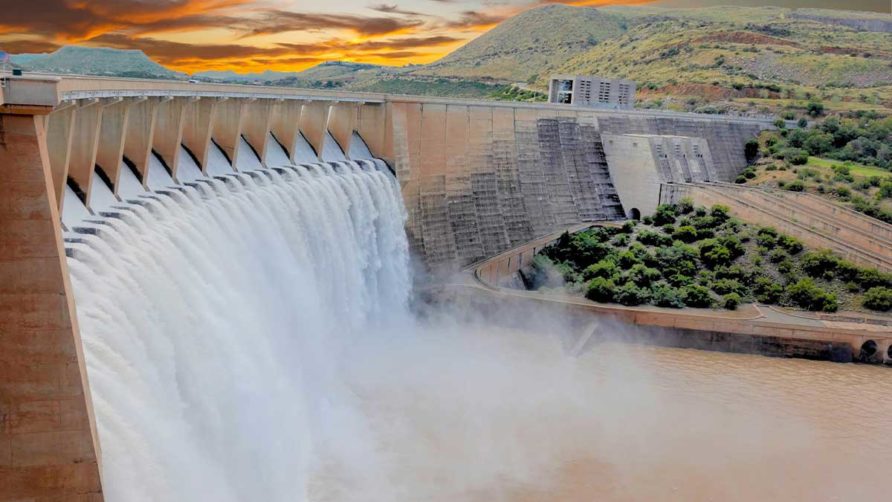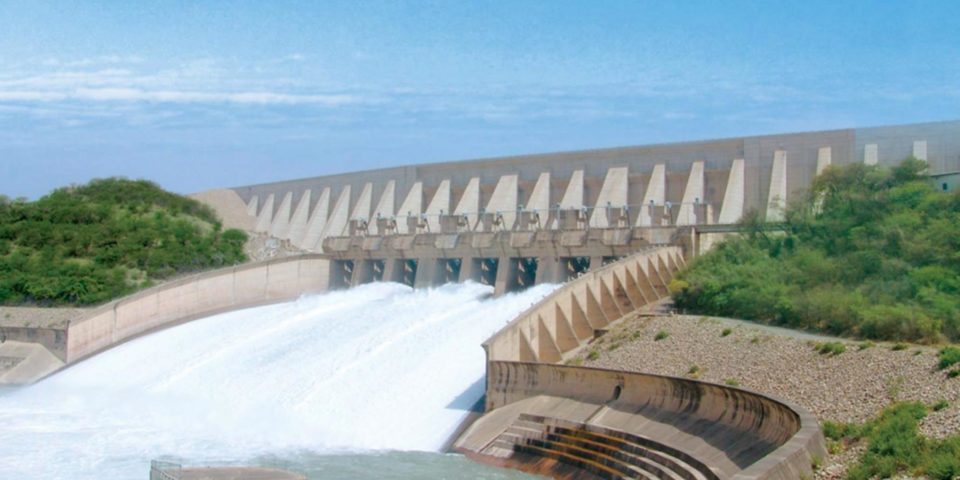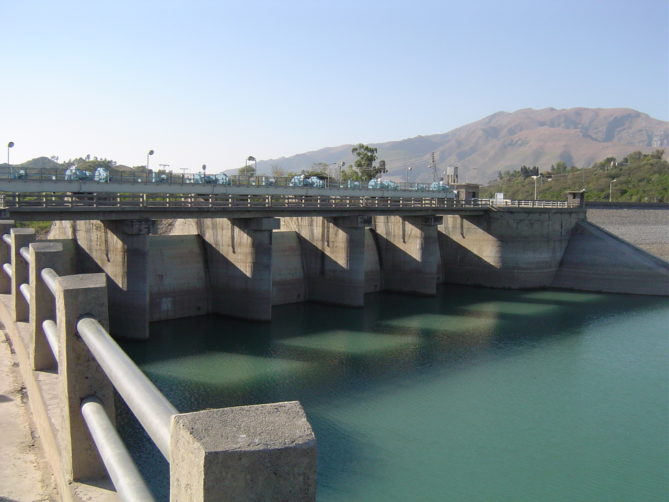List of 15 Most Famous Dams in Pakistan

As you all may know, Pakistan is an agro-based economy, thus heavily reliant on water resources. There are many picturesque areas and eye-catching sceneries in Pakistan that are worth visiting. What’s more intriguing, though, is that dams have joined lakes in becoming popular tourist destinations and holiday spots!
Pakistan has approximately 150 dams spread across the country, however, Agency21 International will be listing down 15 of the most famous dams in Pakistan. We hope you have a knowledgeable read!
Dams In Pakistan
Let’s start by discussing what dams are and how they work.
A dam is a physical barrier that slows or limits the flow of subsurface or surface water. Dams build reservoirs that serve multiple purposes, including flood control, irrigation, human consumption, industrial use, fish farming, etc.
Dams and hydropower are frequently combined to produce electricity. Water that can be equally provided to different areas in the country can be gathered or stored in a dam as well. Dams are mandatory for economies like Pakistan which are dependent on their agricultural system.
The majority of the dams in Pakistan are situated in Punjab and Khyber Pakhtunkhwa, where the Indus River and streams flow through the mountains south to the Arabian Sea.
List Of Famous Dams In Pakistan
We have jotted down a list of famous dams in Pakistan, just for you!
Following is a list of 15 most known dams:
1. Rawal Dam
2. Tarbela Dam
3. Neelum-Jhelum Dam
4. Mangla Dam
5. Mirani Dam
6. Diamer Bhasha Dam
7. Khanpur Dam
8. Sabakzai Dam
9. Hub Dam
10. Satpara Dam
11. Darawat Dam
12. Gulpur Dam
13. Namal Dam
14. Warsak Dam
15. Gomal Zam Dam
Let’s Have a Look at Each One of Them Individually!
1. Rawal Dam

If you are residing in Pakistan, it is quite possible that you already know about the famous Rawal Dam situated in the beautiful capital of Pakistan– Islamabad. The construction of Rawal Dam began in 1962 and has since been Pakistan’s water reservoir, supplying water to the housing schemes of Rawalpindi and Islamabad. The dam can hold about 42,000 acre-feet of water.
Both the Korang River and several minor streams that descend from the Margalla Hills supply the Rawal Dam water. Rawal Dam, also popularly known as Rawal Lake, is known for its admirable surrounding park adorned with luxuriant trees, barbeque areas, picnic places, swings and slides for children, and much more!
2. Tarbela Dam

Here’s an interesting fact– Tarbela Dam is the largest earth-filled dam in the world!
Among Pakistan’s dams, the Tarbela Dam holds a prominent position. It is located in Khyber Pakhtunkhwa’s Haripur and Swabi districts. This dam was built to stop the River Indus from flowing, creating the Tarbela Lake reservoir as a result.
The construction of the Tarbela dam began in the early 1960s and was fully operational by 1976. The dam lies 105 kilometres northwest of Islamabad and close to the city of Swabi. The River Indus was used to build this enormous dam.
The dam’s main objective was to store water for irrigation and electrical production. Since the Tarbela Dam is Pakistan’s primary source of hydropower electricity, it often undergoes any necessary upgrades and modifications.
The finest feature of Tarbela Dam is that it has an electricity production capacity of roughly 5,000 megawatts, with a planned extension increasing this to 6,300 megawatts.
3. Neelum-Jhelum Dam

Another famous dam in Pakistan is the Neelum-Jhelum dam. This dam was established recently and built by a Chinese company to manage the flow of water starting from the Neelum river and ending at the Jhelum river. A Neelum-Jhelum hydroelectric plant will be constructed in the valley as well.
The Chinese company was awarded the contract to construct the dam in July 2007, and work on the facility started in 2008. However, the project was delayed for a few years before the first generator was successfully released in April 2018.
About 26 miles (42 kilometres) south of Muzaffarabad, in Pakistan’s Azad Jammu and Kashmir, is where this power plant is located. Its hydroelectric dam can produce 969 MW of electricity.
4. Mangla Dam

The second-largest water reservoir in Pakistan is the Mangla Dam. It is not only a water storage facility; it also plays a significant role in the Indus Waters Basement Treaty, an international agreement between Pakistan and India.
Mangla dam has a height of 147 metres (482 feet) and a length of 3140 metres (10,300 feet). The dam was built beginning in 1961 and finished in 1967.
Mangla dam is currently one of the key irrigation supplies in the country. The dam was originally just built to store water, but after renovations, it now generates 1,150 megawatts of hydroelectricity.
5. Mirani Dam
In the Kech District of Pakistan’s Balochistan region, the Mirani Dam is located on the Dasht River, south of the Central Makran Range. It is a body of water that collects water from the Kech and Nihing rivers, covering 302,000-acre-feet (373,000,000 m3).
Mirani Dam was completed in 2006, however, th6. e Water and Power Development Authority (WAPDA) of Pakistan constructed the Mirani Dam in 2001 to supply water to the city of Gwadar. The project was finished by Descon Engineering Limited as an EPC.
If a dependable water supply were made available, the arable land in Kech Valley could be used for agriculture. In the summer and during floods, the dam functions as a water storage facility.
6. Diamer Bhasha Dam

The dam is currently being built, and once it is done, it will likely be the highest dam in the entire globe. The River Indus is the site of the dam’s construction. The dam will be able to generate 4800 Megawatts of power with its 12 turbines.
A minor piece of this dam is in Diamer, Gilgit Baltistan, and the majority of it is in the Kohistan District, KPK.
Once completed, the Diamer-Bhasha Dam will be able to produce 4500 MW of hydroelectricity. Pakistan will be able to use an additional 8,500,000 acre-feet of water that the dam can store for drinking and agricultural purposes.
The dam will also include fourteen gates, with a combined height of 272 metres. The Diamer-Bhasha Dam has a live storage capacity of 6,400,000 acre-feet (7.9 km3) while having a gross storage capacity of 8,100,000 acre-feet (10 km3). There will be two underground powerhouses constructed for the dam.
7. Khanpur Dam

The Khanpur Dam was built in 1983 on the Potohar Plateau in KPK to lessen the flow of the Haro River. As a result, the twin towns of Islamabad and Rawalpindi received drinking water from the reservoir created by Khanpur Lake.
We wouldn’t be exaggerating if we said that the dam entails a beautiful view and immense scenic beauty. Every year, a considerable number of tourists flock to Khanpur Lake’s beaches to partake in a range of water sports like boating, jet skiing, cliff diving, swimming, and kayaking. People can also go camping, trekking, and zip-lining nearby.
8. Sabakzai Dam
Sabakzai Dam is located on the Zhob River in Balochistan. In the southwest corner of Balochistan, it controls the flow of the Zhob River. In essence, Sabakzai Dam is an embankment dam
The Sabakzai Dam was built between 2004 and 2007, which helped with regional land irrigation and gave the locals a much-needed recreational space. General Pervez Musharaf launched the initiative in 2007, and it has been running ever since.
Sabakzai Dam helps irrigate nearby areas, although work is still being done to create a functional irrigation route through the dam. The Sabakzai Dam, which also serves as a popular destination for visitors from the province, has been crucial in maintaining the river’s water flow.
9. Hub Dam

Hub Dam can be found in the Balochistani district of Lasbela and the Sindhi district of Karachi. The dam was built beginning in 1963, and it was completed in 1981. The dam is being built on the Hub River and can hold 857,000 acre-feet of water.
The 24300-acre Hub Dam is located on the border between the provinces of Sindh and Balochistan. In 1974, the Sindh Government declared the vicinity of the dam to be a nature reserve. Here, migratory birds can be observed in realistic habitats, including pelicans, ducks, cranes, and other species.
10. Satpara Dam
Satpara Dam is situated in the Skardu Valley in Gilgit-Baltistan, close to Satpara Lake. Millions of gallons of water are sent to Skardu city every day by the Satpara Dam, which also generates 17.4 megawatts of hydroelectricity to power the community.
The powerhouses of the dam were first constructed in 2013. It is without a doubt that Satpara Dam is one of Pakistan’s most picturesque lakes due to which Satpara Lake is frequently visited by tourists.
The dam generates 17.36 MW of hydropower, cleans 15,536 acres (62.87 km2) of land, powers around 30,000 households in the Skardu Valley, and provides Skardu with about 3.1 million gallons of potable water each day. The dam construction was concluded in 2011.
11. Darawat Dam

Darawat Dam is a concrete gravity dam located in Sindh Province’s Jamshoro District, on the Nai Bran River. It was built in 4 years and in 2013, Asif Ali Zardari officially inaugurated the dam.
The dam has a 150 million cubic metre water storage capacity and it primarily helps with irrigation of nearby fields and serves as a picnic area for locals who travel from Hyderabad and Karachi.
12. Gulpur Dam

The Poonch River, a significant sidestream that rises from the Jhelum River, is where the Gulpur Dam is located. The dam was constructed in February 2020, making it quite recent. The Project is located around 28 kilometres upstream of the Mangla Dam Reservoir.
While Lahore city is 235 kilometres from the dam site, Islamabad is only 167 kilometres distant. Wapda and KOSEP inked a deal for the project’s construction with MIRA Power Ltd., a subsidiary of a Korean business.
13. Namal Dam
Namal Dam is located 32 kilometres from Mianwali city. The dam was built by British engineers back in 1913. On the western and southern sides of the Namal dam are mountains. Agriculture is practised on the other two sides.
The area is bordered by plains used for farming, which irrigate the land. It has developed into a centre for migrating birds, attracting birdwatchers.
14. Warsak Dam

Warsak Dam is a water reservoir constructed on the Kabul River, which is located in Peshawar. Pakistan and Canada worked together to build the dam. The Colombo Plan’s Warsak Dam was finished in two phases with funding provided by the Canadian government.
The first part of the dam, which is run by WAPDA, was constructed in 1960, and the second phase was built in the 1980s. With plans to increase the capacity further to generate 525 megawatts, this takes the dam’s present capacity to about 240 megawatts.
People frequently go fishing and boating at this location, and there is also a hotel for visitors to stay in.
15. Gomal Zam Dam

The Gomal Zam Dam was constructed across the Gomal River, a River Indus tributary, for irrigation and hydropower generating. The construction of the dam began in 2001, however, it took 10 years for it to complete.
The main canal, which is 60.5 km long, would irrigate roughly 163,000 acres (660 km2) of deserted land in Tank district and Tehsil Kulachi in Dera Ismail Khan. It has a total storage capacity of 1,140,000 acre-feet (1.41 km3). 17.4 MW of electricity is generated by it.
Concluding it All
As mentioned at the start of this article, there are over 150 dams in Pakistan, however, aforementioned are the 15 most famous dams there are in Pakistan. Dams are very important in Pakistan since we are an agricultural nation and depend on a water supply for both our existence and our prosperity. Furthermore, dams are the perfect spot to hang out with family and friends due to their scenic beauty and recreational facilities.
Read More:
8 Common Types of Glass for Windows
6 Ways To Build Wealth Through Real Estate
Benefits Of Real Estate Investments In Pakistan

